
Sarah Zielinski
Editor, Print at Science News Explores
Sarah Zielinski wanted to be a marine biologist when she was growing up, but after graduating from Cornell University with a B.A. in biology, and a stint at the National Science Foundation, she realized that she didn’t want to spend her life studying just one area of science — she wanted to learn about it all and share that knowledge with the public. In 2004, she received an M.A. in journalism from New York University’s Science, Health and Environmental Reporting Program and began a career in science journalism. She worked as a science writer and editor at the Journal of the National Cancer Institute, the American Geophysical Union’s newspaper Eos and Smithsonian magazine before becoming a freelancer. During that time, she started her blog, Wild Things, and moved it to Science News magazine, and then became an editor for and frequent contributor to Science News Explores. Her work has also appeared in Slate, Science, Scientific American, Discover and National Geographic News. She is the winner of the DCSWA 2010 Science News Brief Award and editor of the winner of the Gold Award for Children’s Science News in the 2015 AAAS Kavli Science Journalism Awards, “Where will lightning strike?” published in Science News Explores. In 2005, she was a Marine Biological Laboratory Science Journalism Fellow.

Trustworthy journalism comes at a price.
Scientists and journalists share a core belief in questioning, observing and verifying to reach the truth. Science News reports on crucial research and discovery across science disciplines. We need your financial support to make it happen – every contribution makes a difference.
All Stories by Sarah Zielinski
-
 Animals
AnimalsToads prefer to bound, not hop
The multiple hops made by toads are really a bounding motion similar to movements made by small mammals.
-
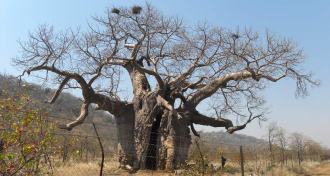 Plants
PlantsHuge, hollow baobab trees are actually multiple fused stems
The trunk of an African baobab tree can grow to be many meters in diameter but hollow inside. The shape, researchers say, occurs when several stems fuse together.
-
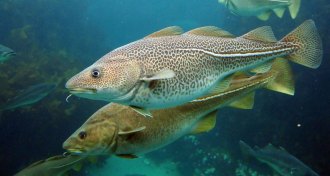 Climate
ClimateWarming Arctic will let Atlantic and Pacific fish mix
The ultra-cold, ice-covered Arctic Ocean has kept fish species from the Atlantic and Pacific separate for more than a million years — but global warming is changing that.
-
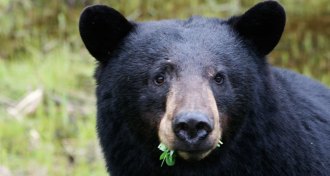 Animals
AnimalsAnt-eating bears help plants
A complex web of interactions gives a boost to rabbitbrush plants when black bears consume ants.
-
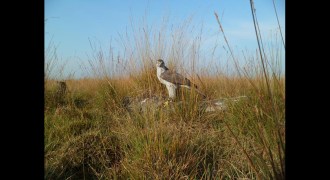 Animals
AnimalsIf pursued by a goshawk, make a sharp turn
Scientists put a tiny camera on a northern goshawk and watched it hunt. The bird used several strategies to catch prey, failing only when its targets made a sharp turn.
-
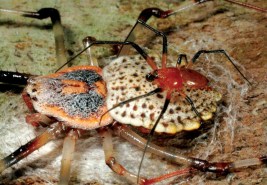 Animals
AnimalsCringe away, guys — this spider bites off his own genitals
After sex, a male coin spider will chew off his own genitals, an act that might help secure his paternity.
-
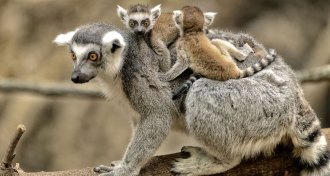 Animals
AnimalsLemurs aren’t pets
The first survey of lemur ownership in Madagascar finds that thousands of the rare primates are held in households.
-
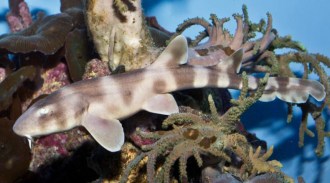 Animals
AnimalsPaternity test reveals father’s role in mystery shark birth
A shark pup was born in a tank with three female sharks but no males. A genetic study finds that the shark must have stored sperm for nearly four years.
-
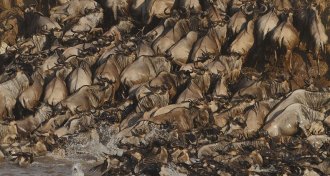 Animals
AnimalsHow many wildebeest? Ask a satellite
High-resolution satellite imagery could offer a reliable way to count large mammals in open habitats from space.
-
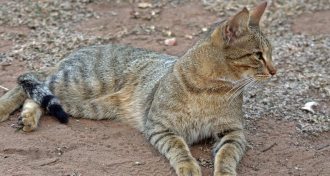 Animals
AnimalsLittle African cats need big parks
Protecting African wildcats requires large protected areas free of feral cats to avoid the risk of the wild species disappearing through hybridization.
-
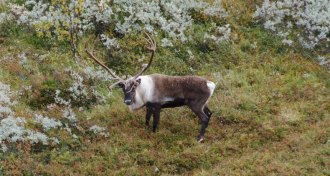 Animals
AnimalsChina’s reindeer are on the decline
A small, semi-domesticated population of reindeer found in northern China is suffering due to threats ranging from inbreeding to tourism.
-
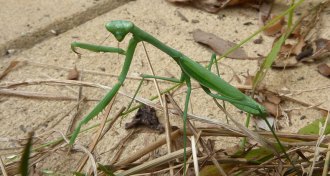 Animals
AnimalsStarving mantis females lie to make a meal of a male
When in desperate straits, a female false garden mantid turns into a femme fatale, emitting false chemical cues that lures in a male to eat.